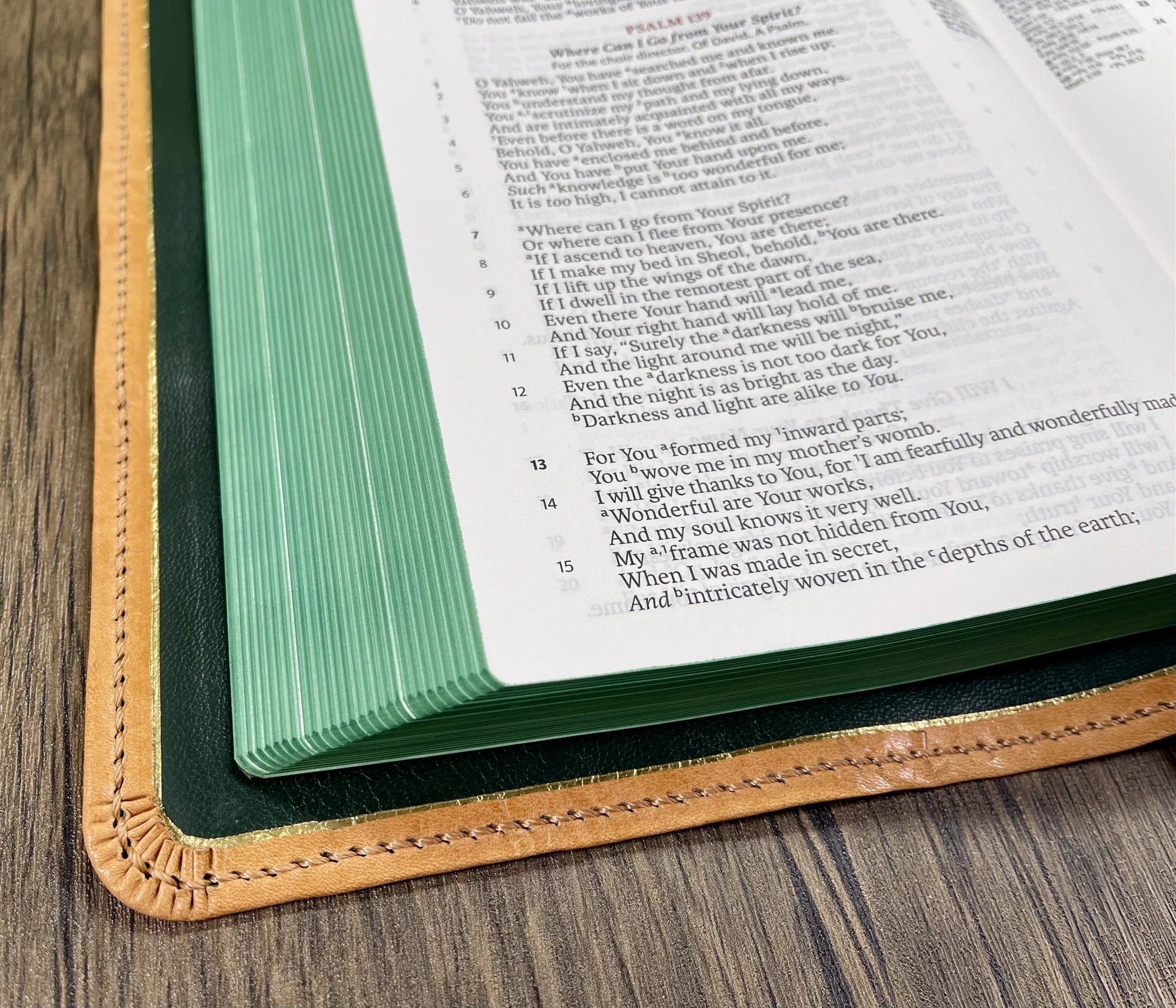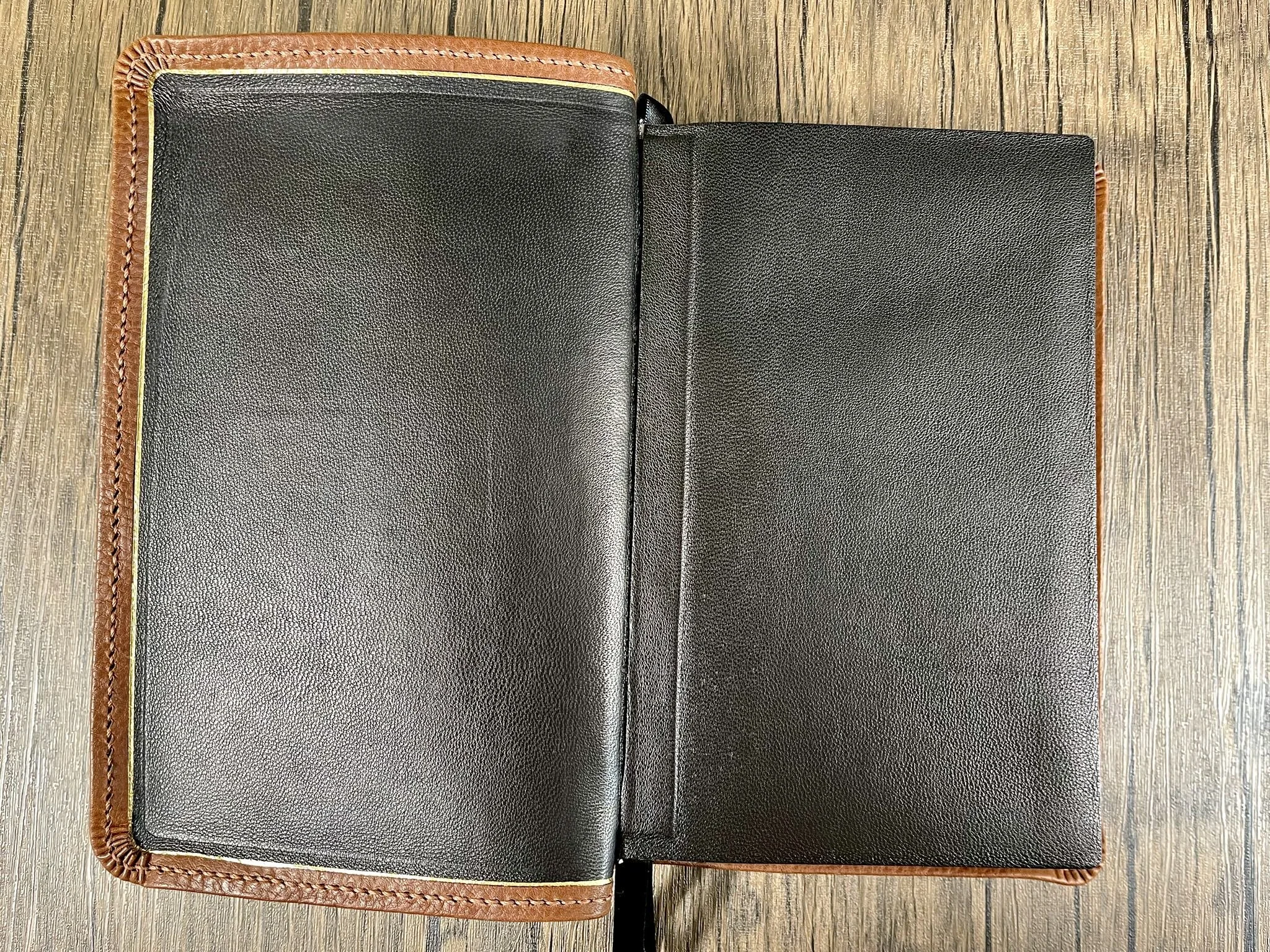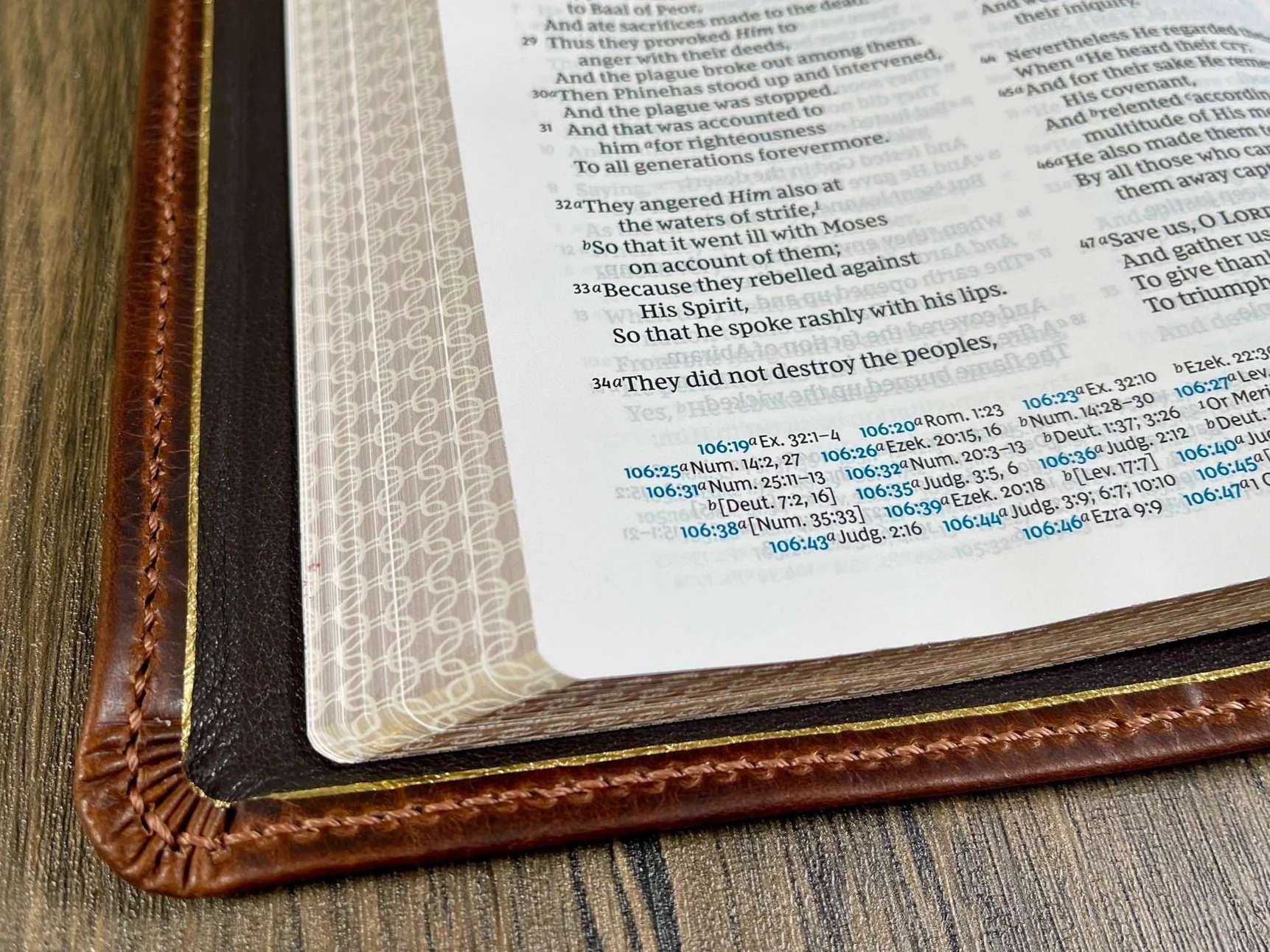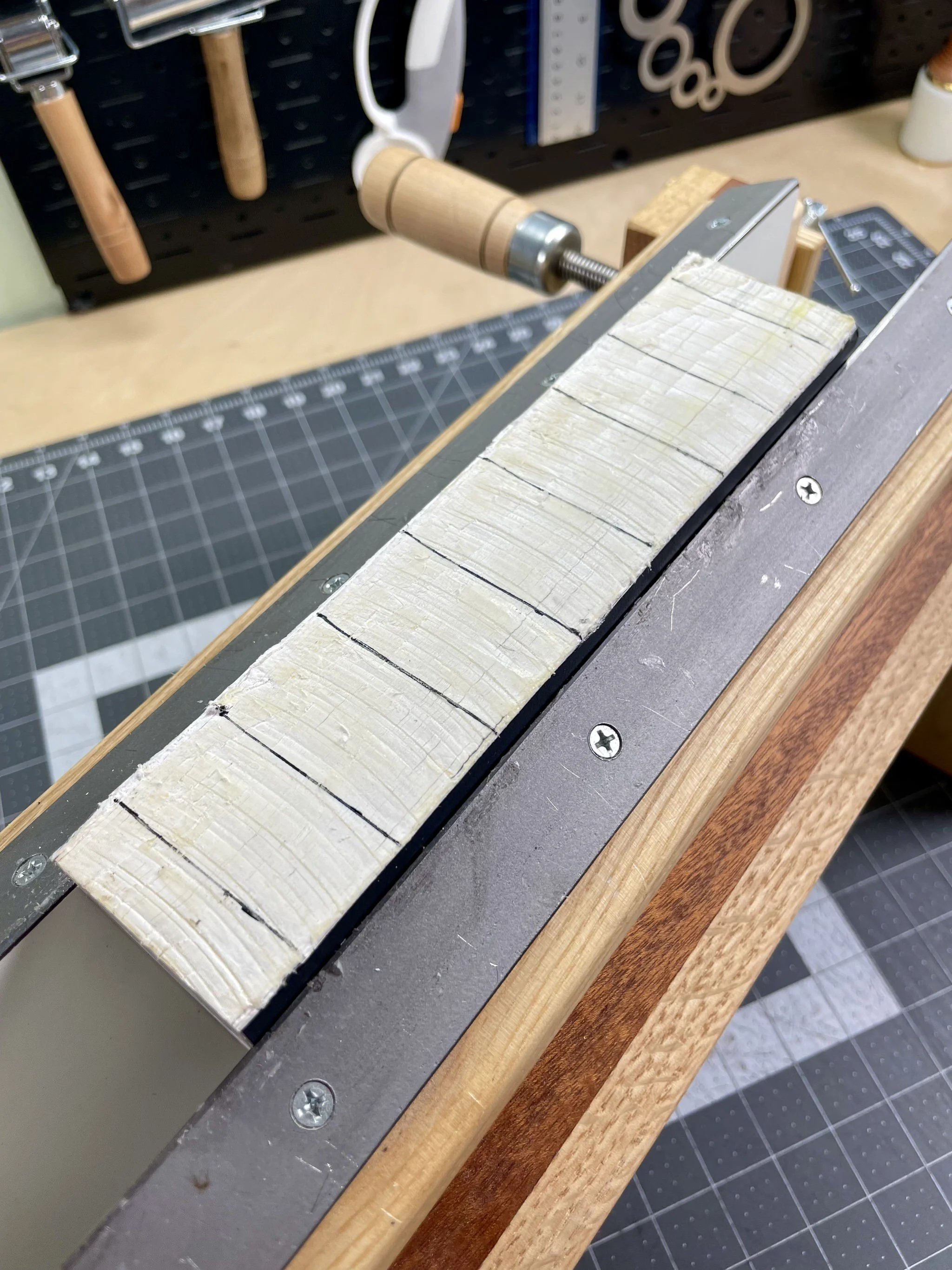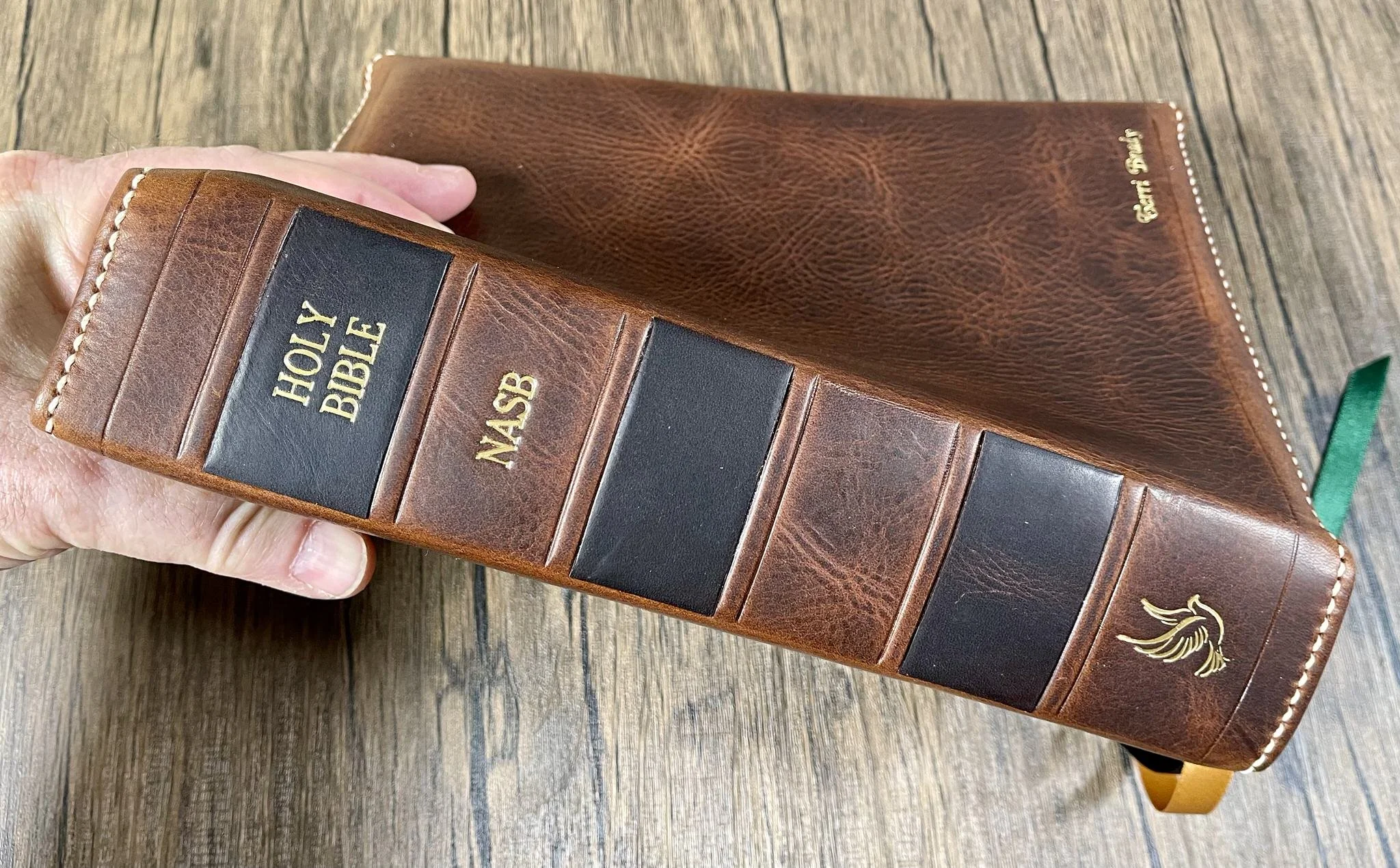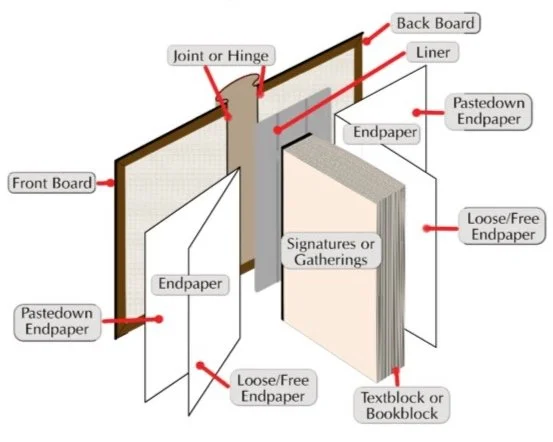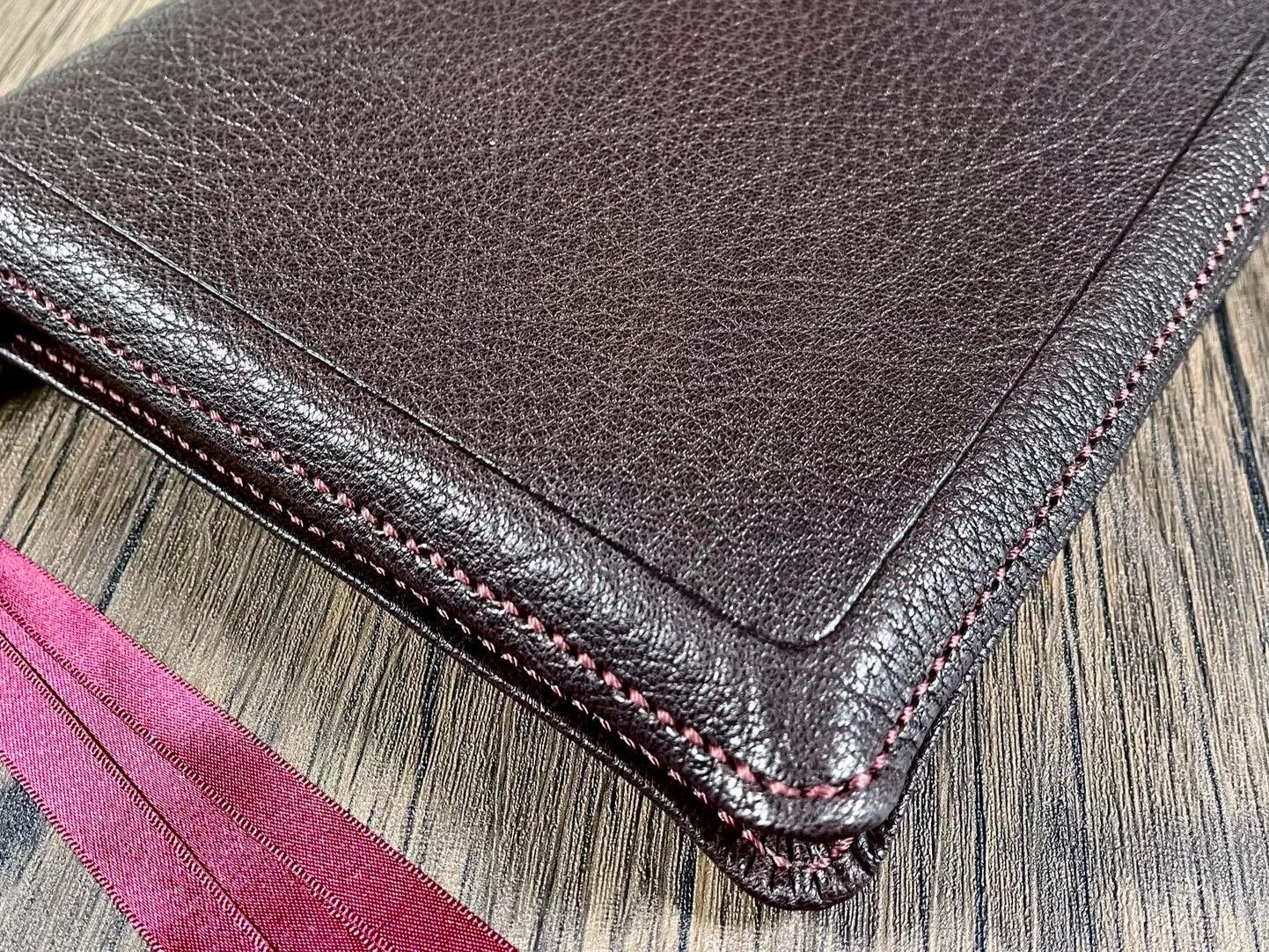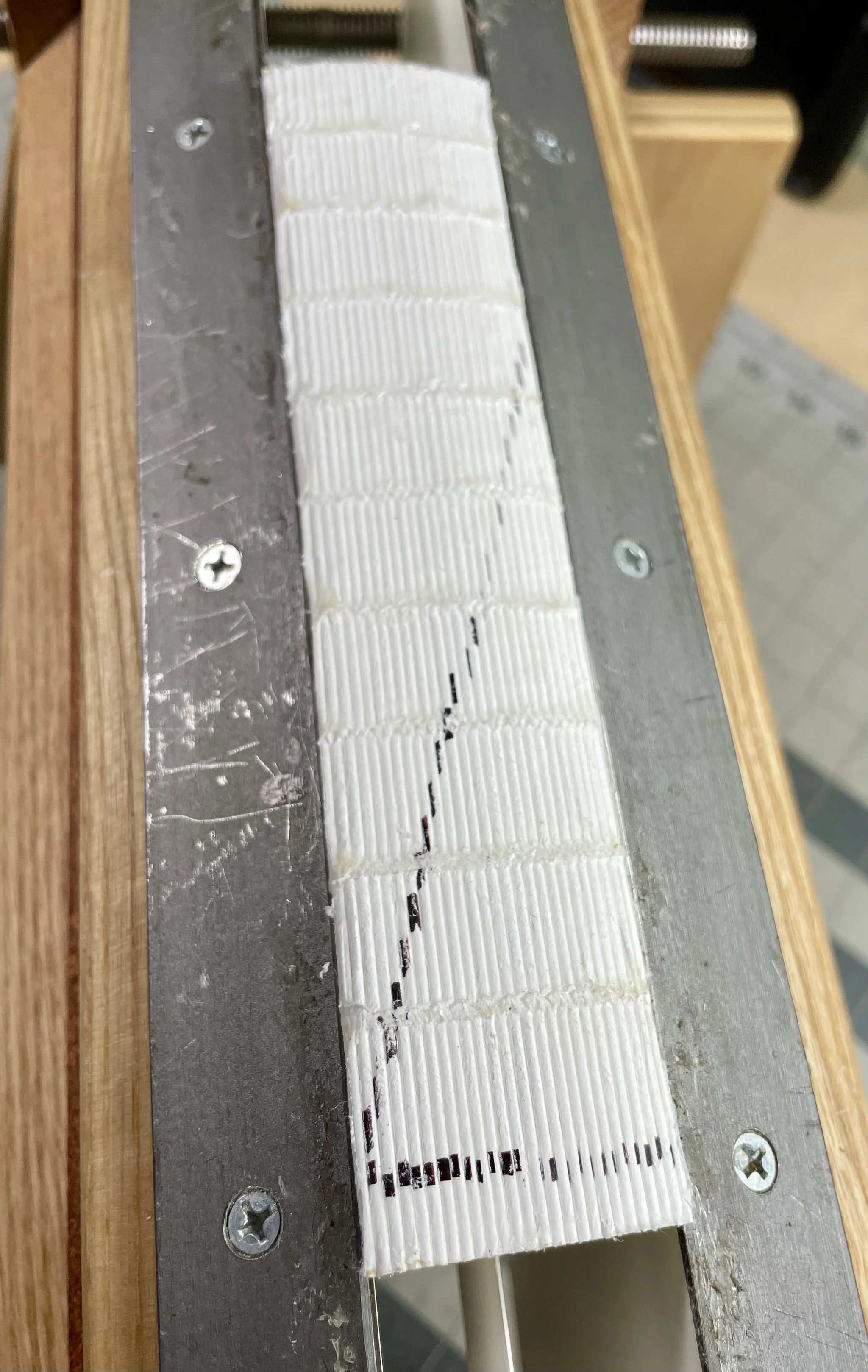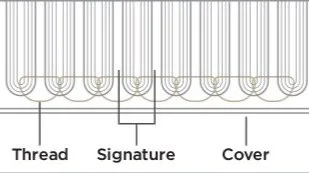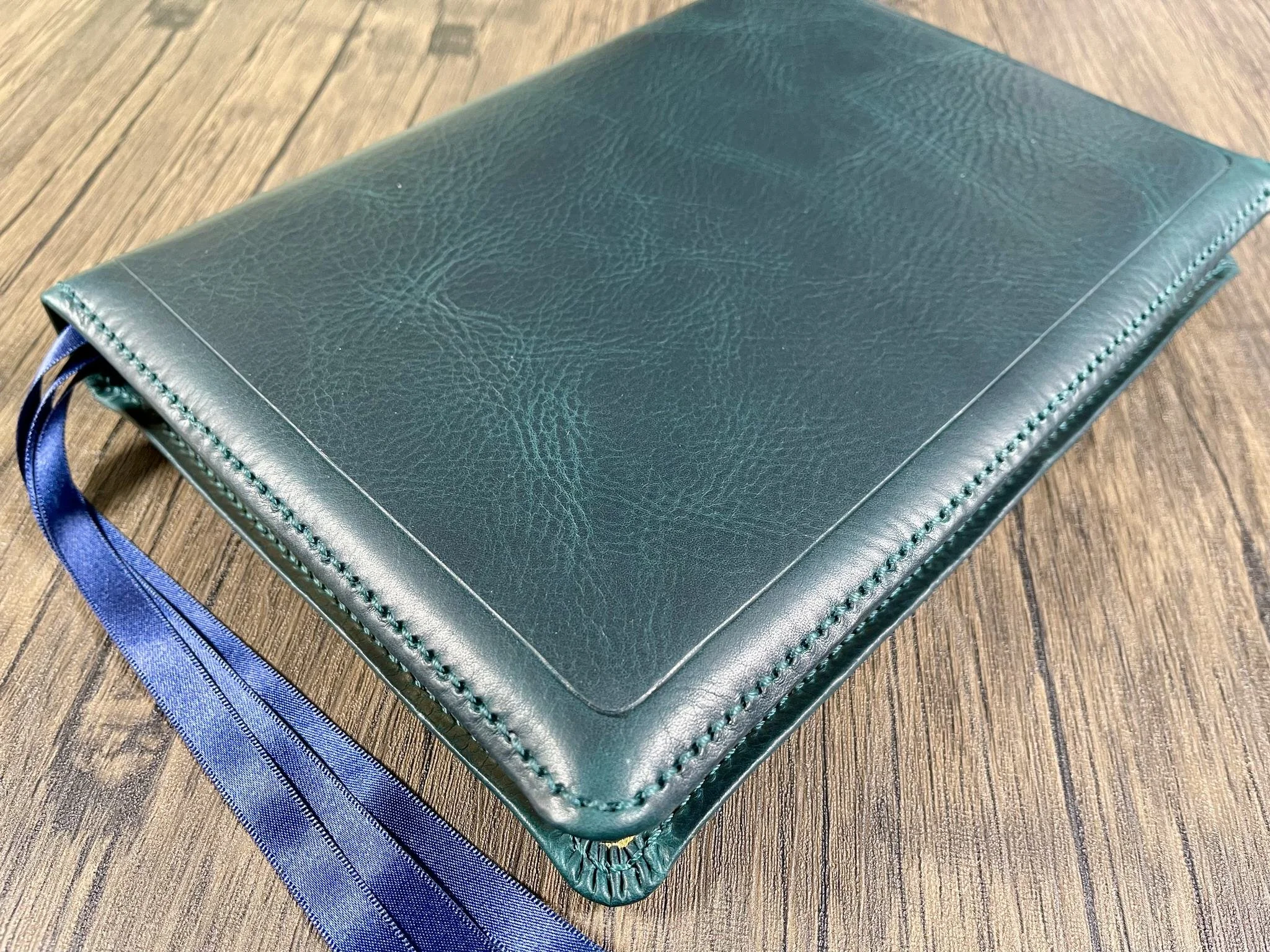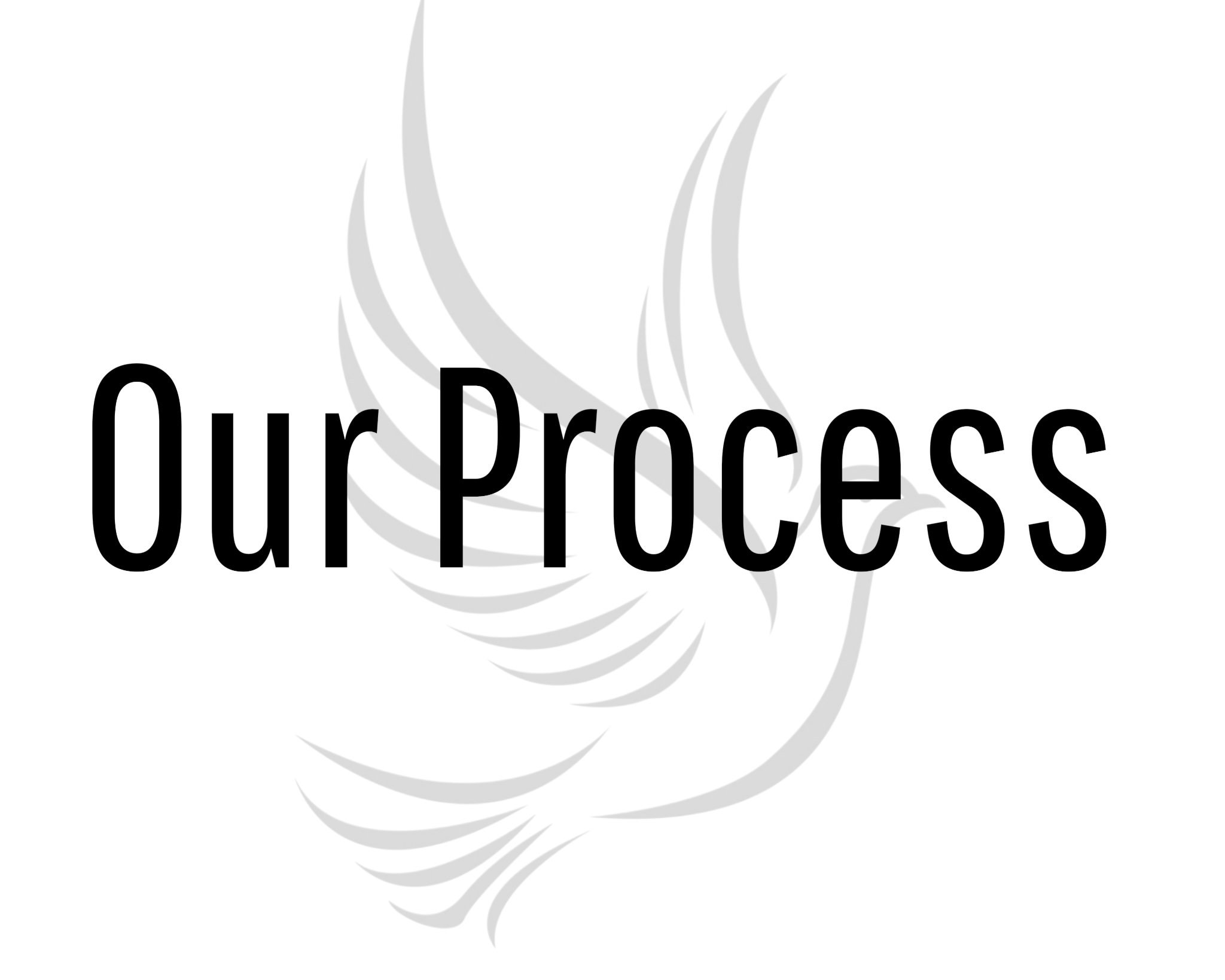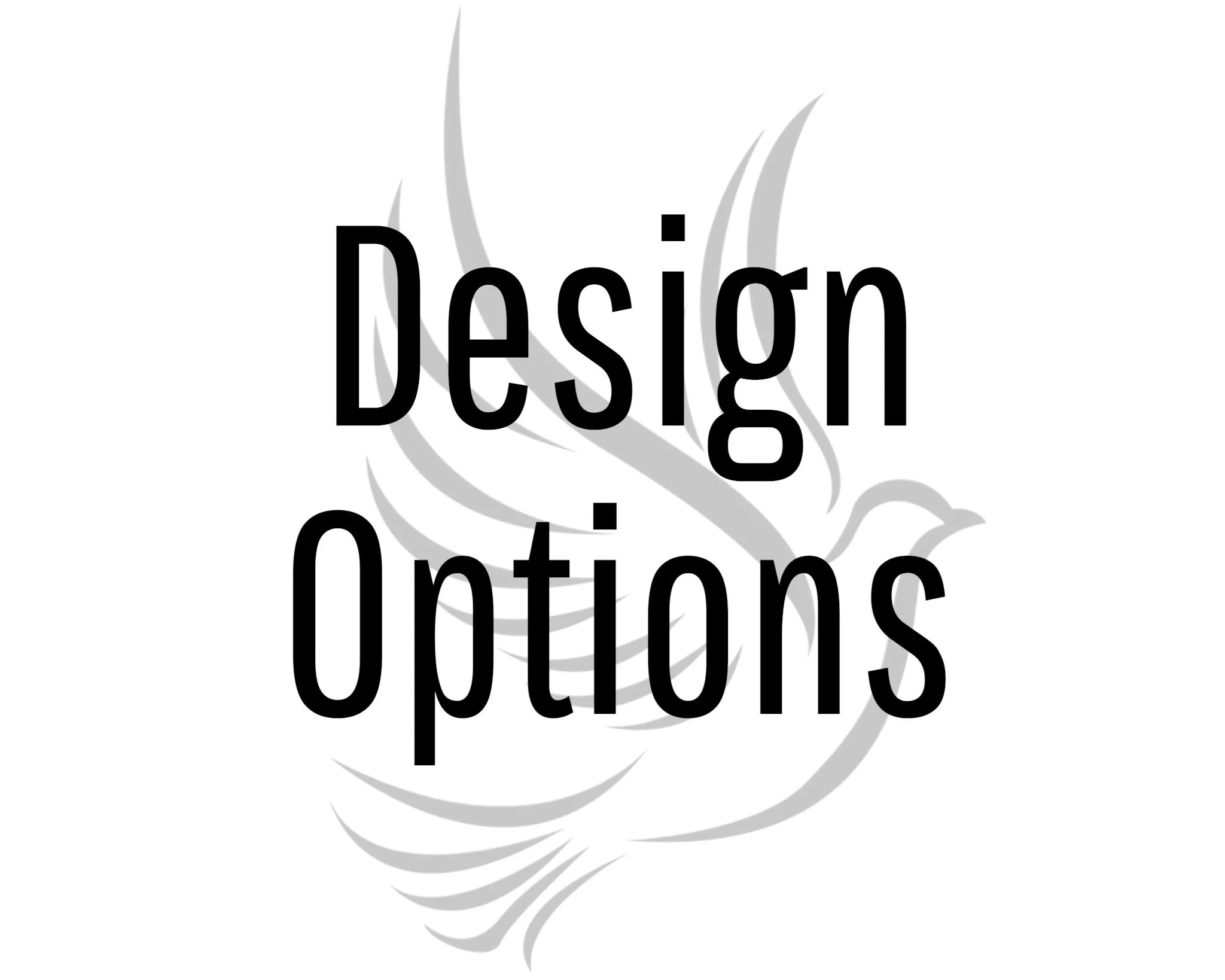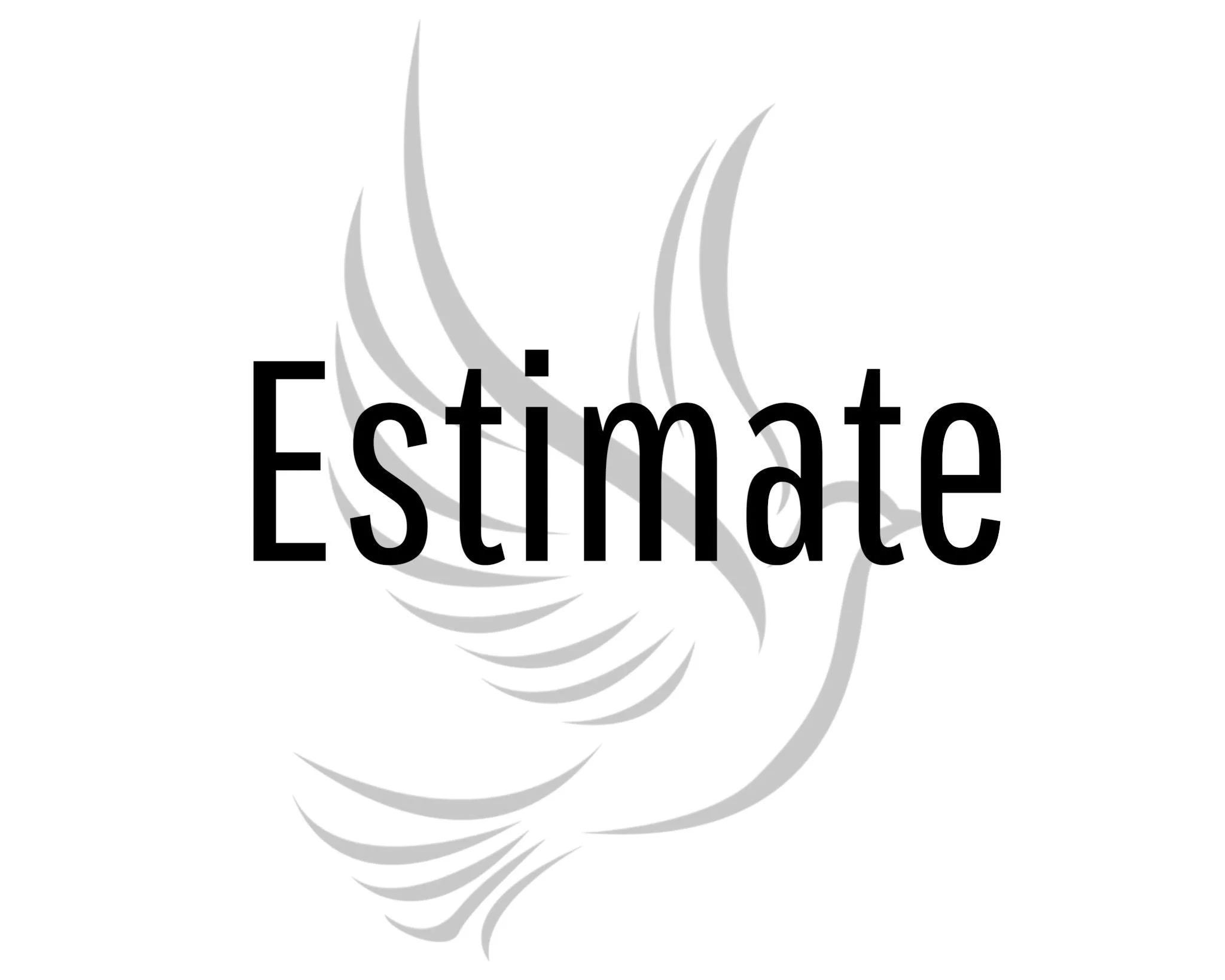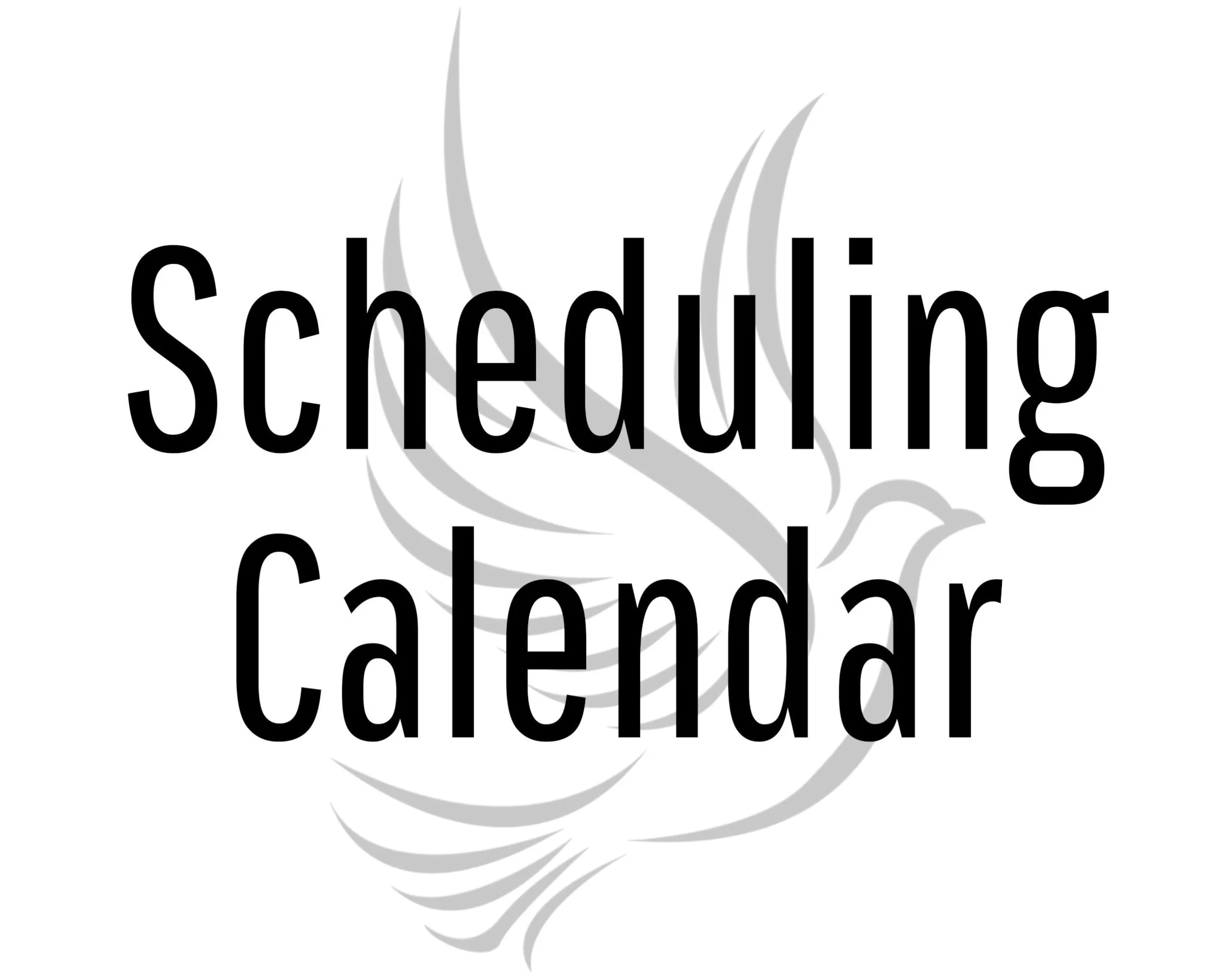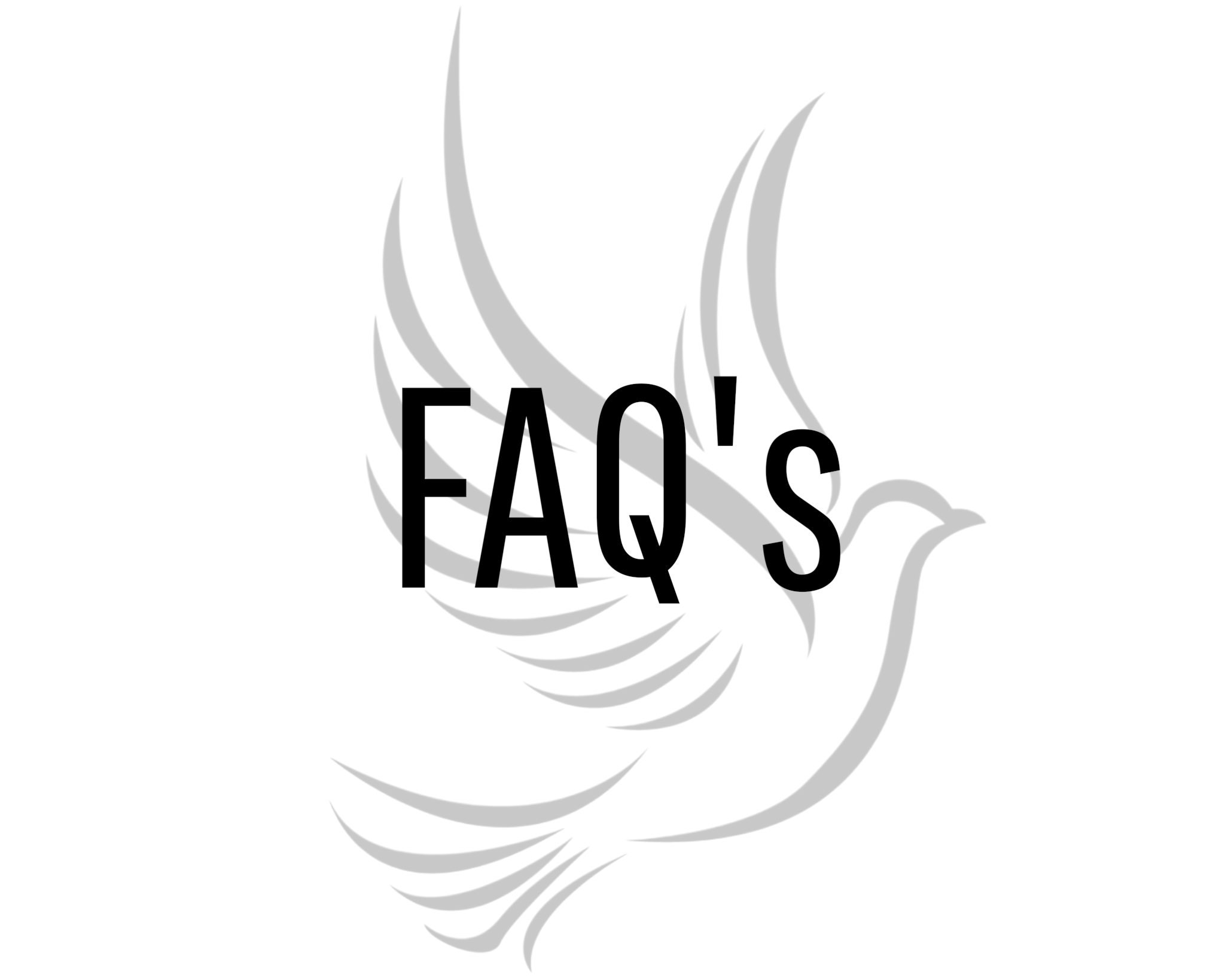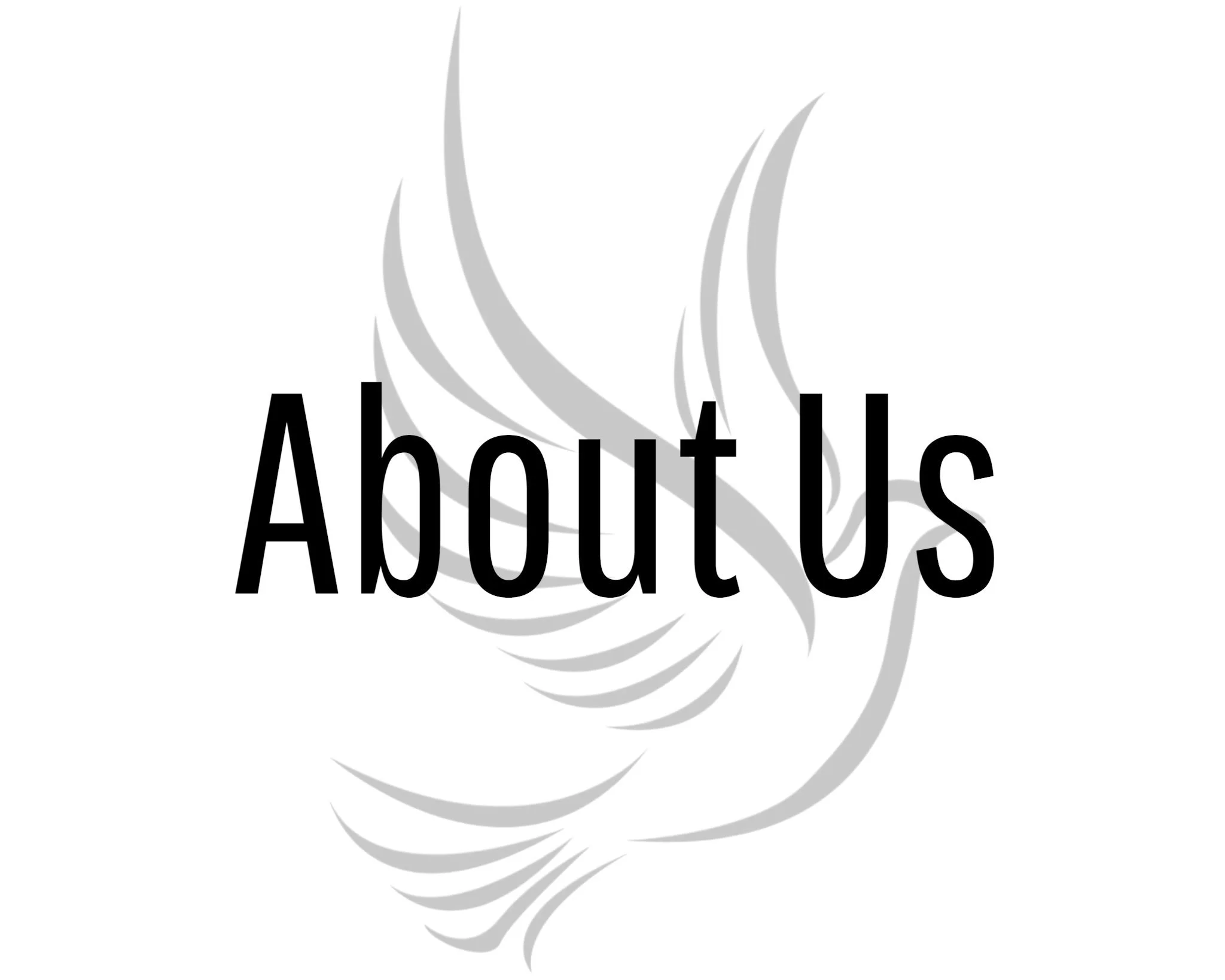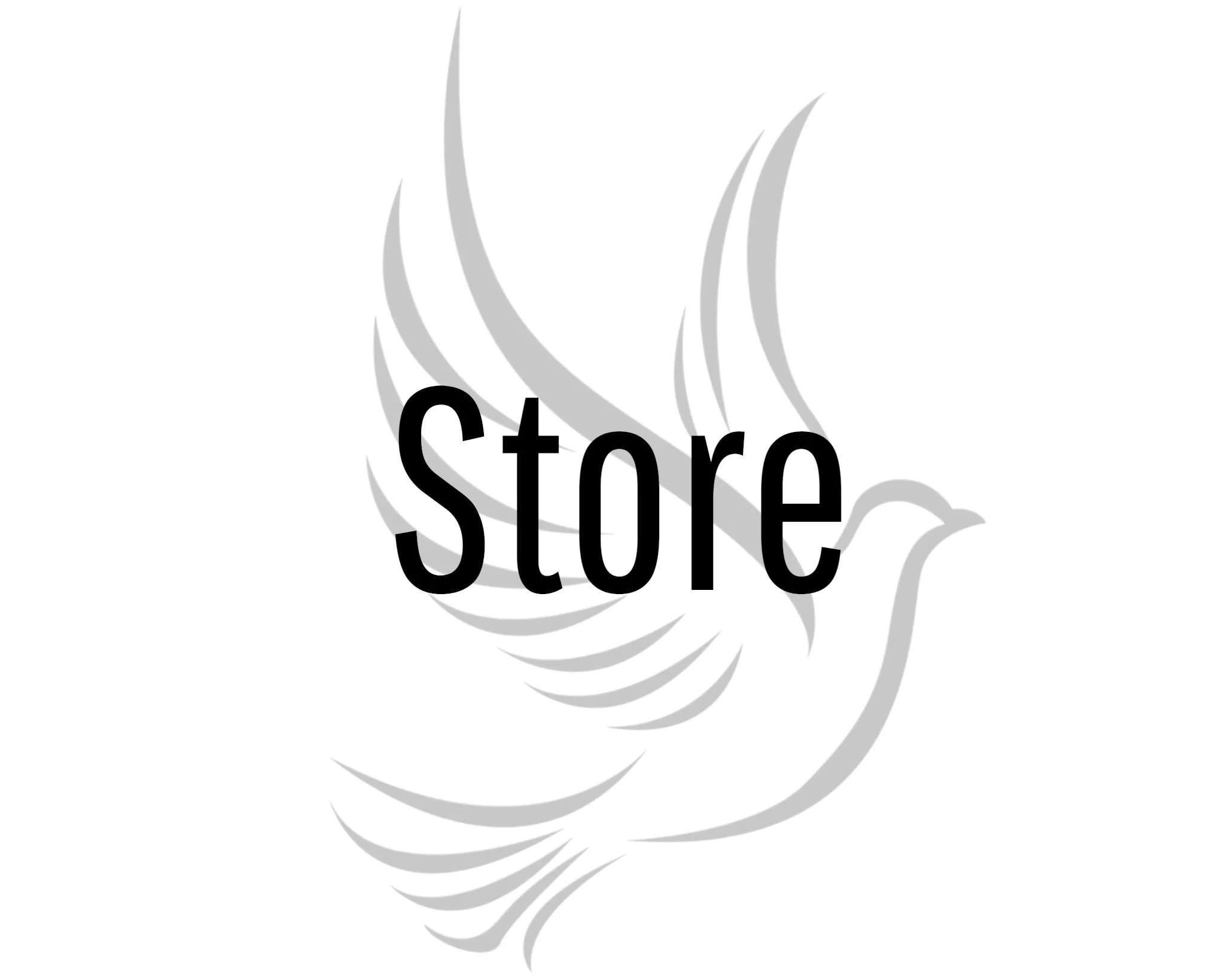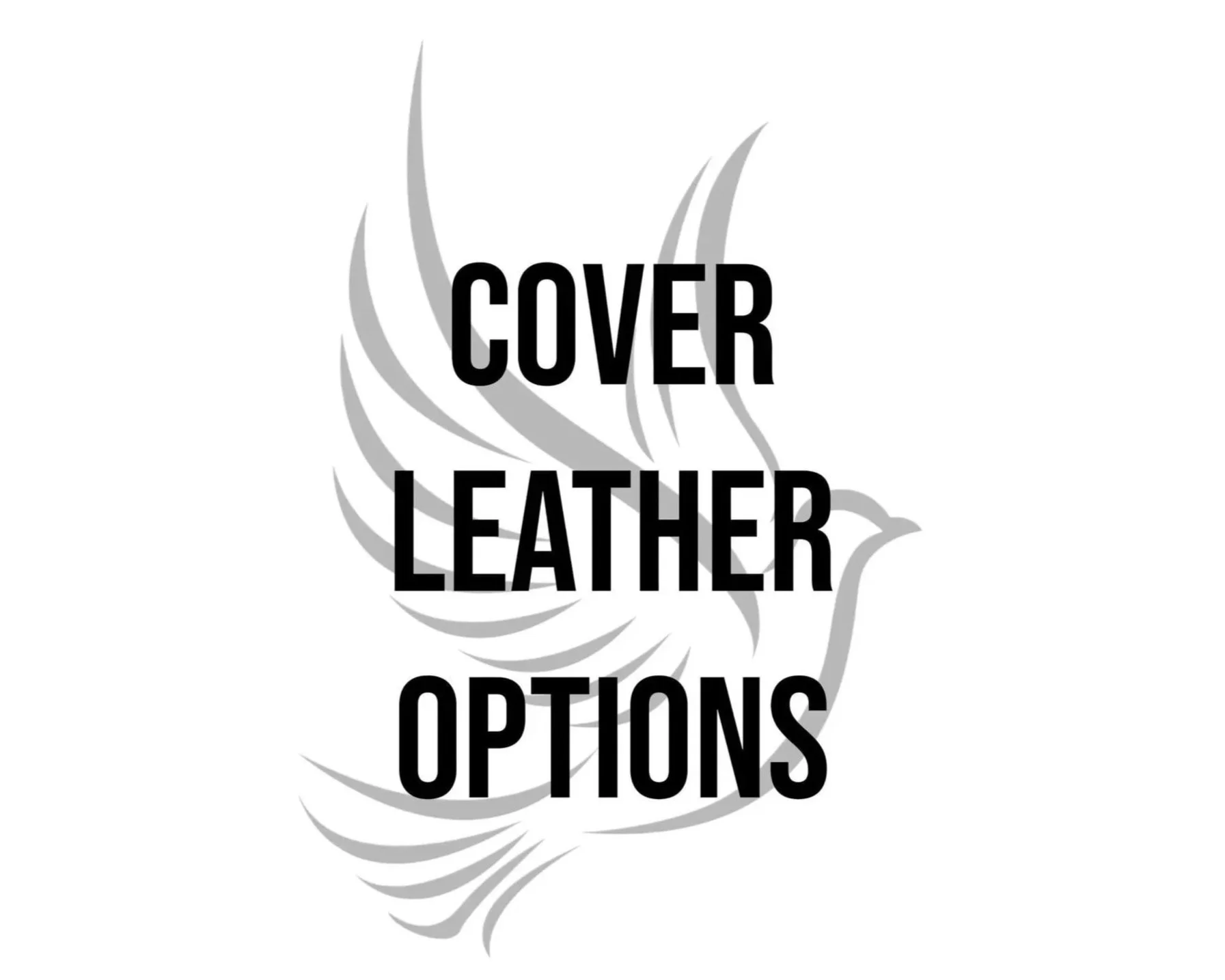Anatomy of a Bible
Here is a list of various terms describing the makeup of a Bible.
Art Gilt (Page Dye)
Art Gilt (Page Dye) adds a color to the edge of the pages. This tint is created by adding a thin coating of any color dye onto the edges of the book block. Art gilt is used to create a unique look that is typically found on premium Bible lines.
Edge-Lined Binding
This refers to the method of bookbinding wherein a leather cover attaches to the interior paper pages (called a “book block”) via tabs of the cover’s leather liner going along the “edges” of the book block. This handcrafted process utilizes genuine leather for the liner material, rather than paper or vinyl. This results in a supple and flexible, yet especially durable cover. This old-world technique reinforces the hinge between the cover and book block, taking stress off of the paper interior. All of our rebinds are built using this method.
Embossing
Not to be confused with Stamping, Leather Embossing is a technique used to add texture and uniqueness to your custom Bible rebind. Embossing is the art of producing raised patterns on leather. This is a process that takes time to create. The image to be raised is cut out of leather and placed under the cover leather and then hand tooled to create the desired raised image on your Bible.
Endsheet
Latex-covered paper glued to the inside of a Bible’s front and back cover. The endsheet is a decorative element that also serves as support for the Bible’s book block. Resurrection Rebinding attaches the matching lambskin used to make your Bible’s liner. This adds a plush look and feel to your Bible and also additionally helps secure your Bible’s construction.
Gilding
Gilding is the color shown on the edge of a Bible’s pages, often a gold or silver color. This process has been carried on for many generations of book binders for decorative purposes, giving each Bible a classic, elegant appearance. Gilding is created through the application of a metallic leaf foil to the edge of the pages. The gilding gives a beautiful shine to the closed pages of the Bible. Page gilding will water spot, and wear over time.
Yes, you can have the gold/silver page gilding can be replaced. The process is accomplished by sanding down the page edges and re-applying the gilding. This is our single most expensive option as it is actually shipped off to the only company in the USA with the proper equipment to perform the task that will take on “One-off” projects. Adding this process to your rebind will also add approximately four weeks to the time we will have your Bible.
Gilt Line:
Gilt Lines are a decorative line added to the Bible rebind’s inside liner perimeter. Gilt lines are typically the same color as your Bibles page gilding (Gold or Silver), but can vary. These decorative Gilt Lines can be added to your custom Bible Rebinding project.
Glued Spine Construction
A perfect-bound (Glued) Bible is created by cutting the ends of the folded signatures flat, which are then pressed together and glued. Bibles with glued bindings tend to be more affordable options when you purchase the Bible. However, this method of binding will not produce the longevity of a Smyth sewn Bible. While a glued spine constructed Bible can be rebound using additional reinforcement methods, there are drawbacks to rebinding a glued spine Bible. The additional reinforcements will create a tighter gutter, causing your text to roll into the gutter more, making it more difficult to read in the gutter area.
Gutter
The Gutter refers to the space that runs between two facing pages of an open book. It is the area where the left side pages and the right side pages meet at the spine. Some Bibles are published with more margin in the gutter area, making it easier to read. Unfortunately, you’ll find many personal size Bibles “cheat” on the gutter margins, causing the text to roll into the gutter area and be more difficult to read.
Head / Tail Bands
Headbands appear at the top of the spine and tail bands at the bottom. Formerly, they were sewn onto the book block and protected the spine from damage when the Bible was taken from densely stocked bookshelves. Nowadays, they are added as a decorative item to all fine-bound Bibles, as well as to many hardbacks, and the colors are chosen to complement the shade of material and gilding used in the binding.
Hinges
The inner portion of the Bible where the inside cover liner attaches the cover to the text block. The leather hinge allows the edgelined Bible cover to be flexible and is a very important aspect of your Bible’s ability to lay flat.
Onlays
Onlays are thin pieces of leather which are adhered to the spine of a Bible to provide an interesting contrast. The number, color, and location are based on your interest.
Page Gilding
Gilding is the color shown on the edge of a Bible’s pages, often a gold or silver color. This process has been carried on for many generations of book binders for decorative purposes, giving each Bible a classic, elegant appearance. Gilding is created through the application of a metallic leaf foil to the edge of the pages. The gilding gives a beautiful shine to the closed pages of the Bible. Page gilding will water spot, and wear over time.
Yes, you can have the gold/silver page gilding can be replaced. The process is accomplished by sanding down the page edges and re-applying the gilding. This is our single most expensive option as it is actually shipped off to the only company in the USA with the proper equipment to perform the task that will take on “One-off” projects. Adding this process to your rebind will also add approximately four weeks to the time we will have your Bible.
Paste Down Bindings
The paste-down binding method connects the cover and the book block with an adhesive through an endsheet that functions as the hinge. This endsheet covers a board, which provides support to the cover. This is the most common and economical practice for Bible binding used by Bible publishers. However, Resurrection Rebinding only uses Edge Lined construction with our rebinds.
Perimeter Stitching
Perimeter Stitching refers to the thread stitching around the perimeter edge of the Bible cover. This premium feature adds durability to the edges of the cover, preventing the edges from peeling or coming undone, as well as a subtle beauty framing the Bible itself. As with many other features of our Bible rebinds, perimeter stitching is included in our standard rebinds.
Ribbons
Ribbons are attached to the spine of the Bible block and serve as bookmarks. Resurrection Rebinding exclusively uses 10mm Double Satin Berisford Ribbons on all of our rebinds. Our rebinds come standard with up to three (3) Berisford ribbons, but additional ribbons can be added for an additional charge.
Unless specifically requested, we leave our ribbons long. It’s a simple process to shorten ribbons if you prefer shorter ribbons, but you can’t stretch them longer if we provided short ribbons. A good pair of scissors and a lighter to singe the edges after trimming is all that’s needed to shorten them.
Signatures
A signature is a sheet of paper printed with four or more pages of a Bible. It is folded to the approximate final page size, and to put the pages in numerical order. A Bible is made up of many signatures which are sewn together, creating the Bible’s spine. Sewn signatures create a secure text block.
Smyth Sewn
A Smyth-sewn Bible binding is created by stitching together signatures to create the full book block. Smyth-sewn binding is known for durability and a book block that easily lays flat.
Spine Ribs (Hubs)
Decorative raised strips that run horizontally up the Bible’s spine. Historically, hubs were formed with strips of leather under the cover material, but modern hubs are generally made with a specially molded board running along the spine and covered with leather. Raised spin ribs are our standard style, but we can do tooled ribs (not raised) upon request.
Spine Stamping
Bible spine stamping is a process of adding information. Our standard spine stamping includes, HOLY BIBLE, translation acronym (ie NIV, ESV, etc.), and maker’s mark (Dove). Additional information can be added for an additional cost. Spine stamping is done using heated dies to imprint text or images using metallic foils, or can be blind stamped (no foil).
Text Block
A collective unit of signatures (groups of folded pages) that have been sewn or glued together. Once this step is done, the Bible is ready to receive a cover.
Tooled Perimeter Line
The tooled perimeter line is created on the cover leather by hand using a heated tool. The perimeter line accents the edge of the text block. While the tooled perimeter line holds no structural purpose, it does add some elegance to the cover. As with many other features of our Bible rebinds, the tooled perimeter line is included in our standard rebinds.
Yapp
Yapp refers to the amount of the Bible cover’s overhang. The style of yapp refers to the length of the yapp. Named for the 19th Century British book binder William Yapp introduced the technique of extended yapps for pocket sized Bibles to protect the Bible’s text block while the Bible was stored in saddle bags and satchels. This form of binding is still quite common for contemporary, higher end Bibles. Yapp bindings can be divided into full yapp, partial yapp, and standard yapp.
Standard-Yapp: Standard yapp extends just beyond the edge of the text block. The majority of modern Bibles are publisher produced with standard-yapps and provides minimal protection to the text block and page edges.
Semi-Yapp: Believed to have originated from a style of British bookbinding in the 1800s, “yapp” refers to the length of the leather used for a Bible cover, for the purpose of protecting the pages. Semi-yapp adds both an old-world beauty and practical function. the Bible’s yapp partially wraps around the edge of the text block, but does not touch from the front and back cover.
Full-Yapp: Believed to have originated from a style of British bookbinding in the 1800s, “yapp” refers to the leather of a Bible cover that hangs over the text block. Yapp adds both an old-world beauty and protection for the pages of your Bible. “Full” yapp refers to when the leather overhang can fold over to touch, completely covering the pages on the three open sides of the Bible.


